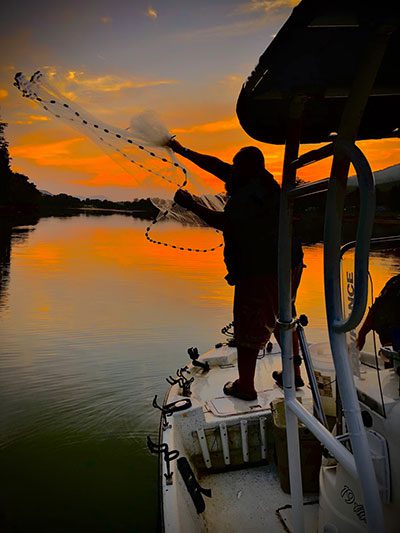Cherokee Lake in East Tennessee is a jewel that is very accessible from the surrounding states of North Carolina, Virginia and Kentucky. There are a lot of amenities on Cherokee Lake to include many campgrounds, marinas and a few restaurants. But most important is the fishing!
Cherokee Lake is home to many species of freshwater fish, some of which are very popular and some that are little known. Most people thing of “Cherokee” as being a striper fishing lake, and there is some truth to that. The striper population is very strong, thanks to the stocking efforts of the TWRA (Tennessee Wildlife Resources Agency). Striper can be found throughout the year, from the John Sevier Steam Plant dam at the north end of the lake in Rogersville, all the way to the southern tip of the lake near Jefferson City. Two of the most common methods for fishing for stripers on the lake are trolling live and artificial baits, and fishing “down lines” with live biat. While using these methods, it is not uncommon to catch some decent Hybrid Bass, otherwise known as “Cherokee Bass”, and white bass.
Crappie fishing is phenomenal on Cherokee and slabs can be caught most all year long. Techniques include long lining, spider rigging, vertical jigging and using live minnows or goldfish. The list of effective artificial baits used is as extensive as that of what is available.
Bass fishing is also very popular on the lake and many tournaments are held throughout the year and include local tournaments as well as regional and nationally recognized tours. Large mouth and smallmouth are equally plentiful on the lake and catching a trophy bass is a common occurrence. Springtime smallmouth fishing is one of my favorites and can provide non-stop excitement on a good day.
Catfish tournaments are also common on Cherokee as are sport fishermen seeking a good catfish dinner. Blues, Flatheads and Channel Cats are all plentiful throughout the lake. The techniques vary for each species and I will cover that in a later article.
The population of Walleye, sauger and saugeye are little known to most, but they are large in number and size. Techniques used while fishing for these species are very similar to techniques used in the northern parts of the country such as the Great Lakes. It is not uncommon to catch walleye in the 25 – 30 inch range with the common eater size (15-20 inch) providing impressive numbers.
As you can see, Cherokee Lake affords many opportunities for the fishing novice, to the seasoned tournament veteran. I haven’t mentioned every species that is living in the lake, such as paddle fish, blue gill and the popular gar for the bowfishers. That said, Lake Cherokee is truly a jewel located in the District IV region of East Tennessee. There are numerous resources available to help in learning the lake, most of which are available at local marinas and by visiting the Tennessee Wildlife Resources Agency online. So stay safe out there and remember, “You Cant Catch Them On The Couch”.
Jeff Willis runs High Ridge Adventures in Marshall NC. He’s fished and hunted our mountains most of his life. He has years of experience as a fishing guide in East Tennessee and Western North Carolina. He also makes the best BBQ in the mountains.
